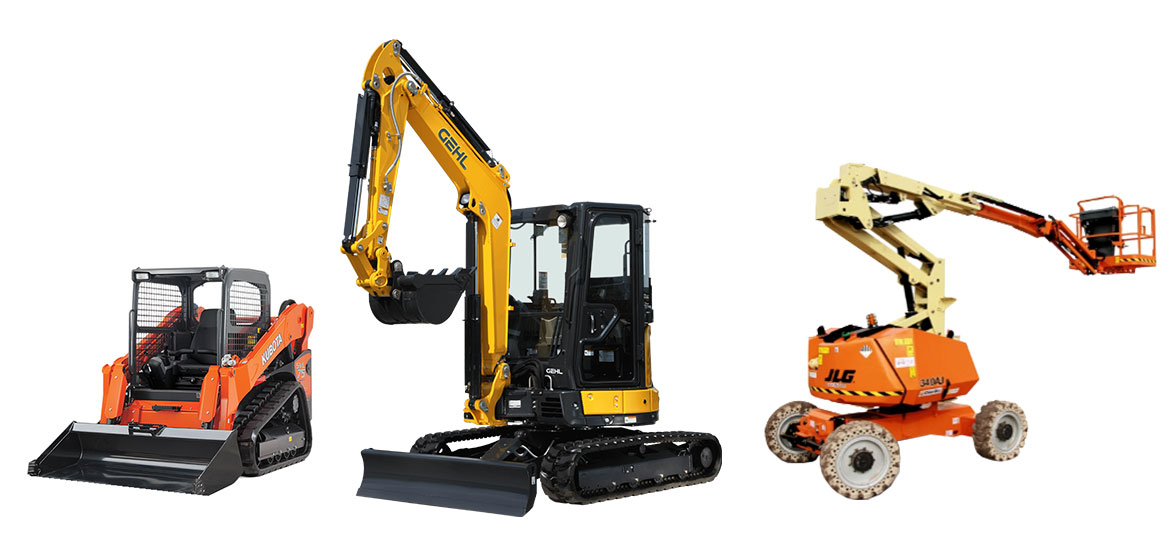Aerial Lift Rental: Versatile Lifting Solutions for High-Access Jobs
Aerial Lift Rental: Versatile Lifting Solutions for High-Access Jobs
Blog Article
Optimize Your Spending Plan by Recognizing the Expenses Related To Construction Equipment Rentals
Recognizing the full extent of expenses linked with building tools rentals is critical for optimizing your budget plan. What methods can be used to effectively manage these prices and ensure a much more efficient rental experience?
Summary of Rental Costs
When taking into consideration building devices rentals, recognizing the connected costs is extremely important for efficient budgeting and project preparation. Rental expenses can differ substantially based on a number of factors, consisting of equipment kind, duration of service, and place. The initial rental cost typically mirrors the devices's market need and its linked functional capabilities, influencing the total cost.
In enhancement to the base rental price, supplementary prices may emerge, such as transportation costs, fuel additional charges, and maintenance costs. It is necessary to make up these additional costs to accurately analyze the total expense of renting out equipment. The rental duration can impact prices; longer leasings might certify for reduced prices, while temporary services might incur higher day-to-day costs.

Break Down of Rental Rates
A detailed understanding of rental rates is necessary for contractors and job managers aiming to optimize their budgets. Rental prices for building and construction tools commonly are composed of numerous elements, including base rates, time-based costs, and use charges.
Base rates are the core charges linked with the service of the devices, commonly determined by the kind and dimension of the machinery. These prices can vary considerably, influenced by variables such as tools demand, schedule, and local market trends. Time-based fees, which might be daily, weekly, or monthly, offer to suit various job timelines and rental durations.
In addition, rental rates might consist of usage fees, which apply when tools is used beyond a specified threshold, ensuring that the rental firm can represent wear and tear. Seasonal need fluctuations can additionally impact rental rates, with peak building and construction seasons generally regulating greater prices.
In addition, comprehending the rental company's plans concerning maintenance and insurance coverage can give additional insight into the total expense framework. By assessing these parts, specialists can make informed choices, ensuring the option of rental equipment lines up with both project demands and budget constraints.
Extra Charges to Take Into Consideration
Comprehending the ins and outs of added costs is important for service providers to handle their overall rental costs effectively. Beyond the common rental prices, numerous additional fees can substantially influence the complete price of tools service. These costs often consist of delivery and pickup charges, which can vary based upon range and logistics associated with moving the equipment to and from the work website.
In addition, some rental firms might impose gas surcharges if the devices is returned with much less fuel than when rented. It is also necessary to know possible cleansing charges, particularly for specialized devices you can try this out that calls for comprehensive maintenance after use.

Extensively examining the rental arrangement and making clear these extra fees ahead of time can assist professionals avoid unanticipated expenses and guarantee that budget plans continue to be undamaged throughout the project lifecycle.
Repair And Maintenance Expenses
Routine upkeep and repair expenses are commonly ignored aspects that can dramatically affect the total expense of construction tools rentals. When renting out equipment, it is essential to consider not just the rental fees however also the prospective prices associated with maintaining the equipment in optimal operating problem.
Many rental business consist of Read More Here standard maintenance as part of the rental arrangement; however, a lot more extensive repair work or unexpected break downs can cause added expenses. It's important to evaluate the rental contract thoroughly to understand what upkeep services are covered and what responsibilities fall on the tenant.
Furthermore, devices that is not properly maintained can lead to inefficiencies on the task website, possibly boosting and triggering hold-ups job prices. To alleviate these threats, it is advisable to conduct regular evaluations and maintain open communication with the rental service provider relating to any type of problems that develop during use.
Insurance Coverage and Obligation Expenses
Insurance coverage and obligation costs are crucial components that can substantially impact the total cost of construction tools services (rental company near me). These prices guarantee that both the rental business and Full Report the client are protected from possible monetary losses developing from mishaps, damage, or burglary during the rental period

In addition, clients need to be aware of any kind of deductibles or exclusions in the insurance coverage, as these can impact prospective out-of-pocket expenditures. Comprehending the conditions of any insurance policy coverage is essential to avoid unforeseen expenses. Eventually, budgeting for insurance and responsibility expenses can aid ensure a smoother rental experience and secure versus financial threats connected with building and construction jobs.
Verdict
In final thought, an extensive understanding of the costs associated with building devices leasings is vital for efficient budget management. Inevitably, educated decision-making regarding equipment services adds to the general success of construction endeavors.
Rental prices can vary substantially based on a number of elements, consisting of tools type, period of service, and area (mini excavator rental). The rental period can influence prices; longer rentals might qualify for affordable rates, while short-term rentals may incur higher day-to-day costs
By carrying out thorough research study and involving with reputable rental business, contractors can successfully browse the complexities of rental rates, ultimately optimizing their financial resources.
Beyond the typical rental prices, numerous additional costs can significantly influence the total price of tools leasing. Rental firms frequently provide obligation insurance coverage that covers injuries to 3rd parties or damages to residential property, while tools damages insurance policy can cover the price of repair work or substitute if the leased devices is damaged.
Report this page